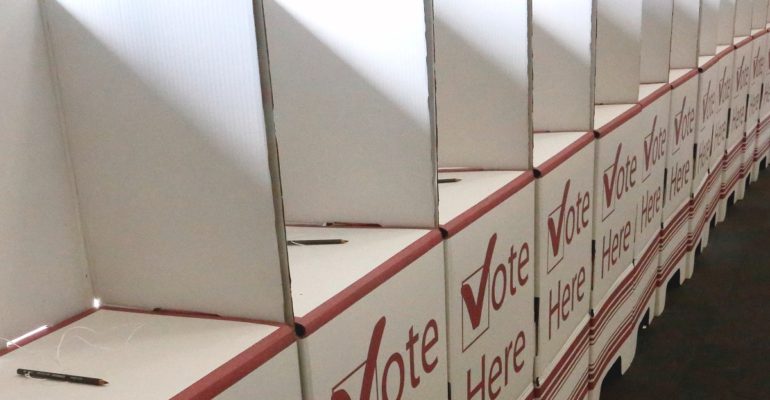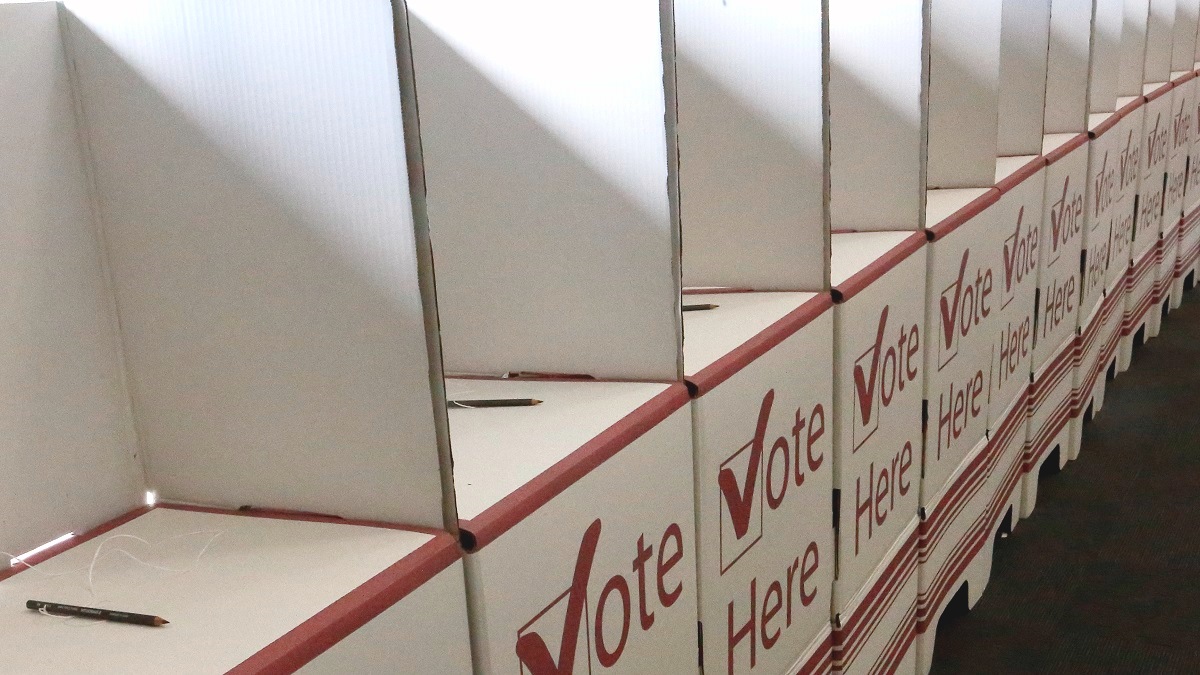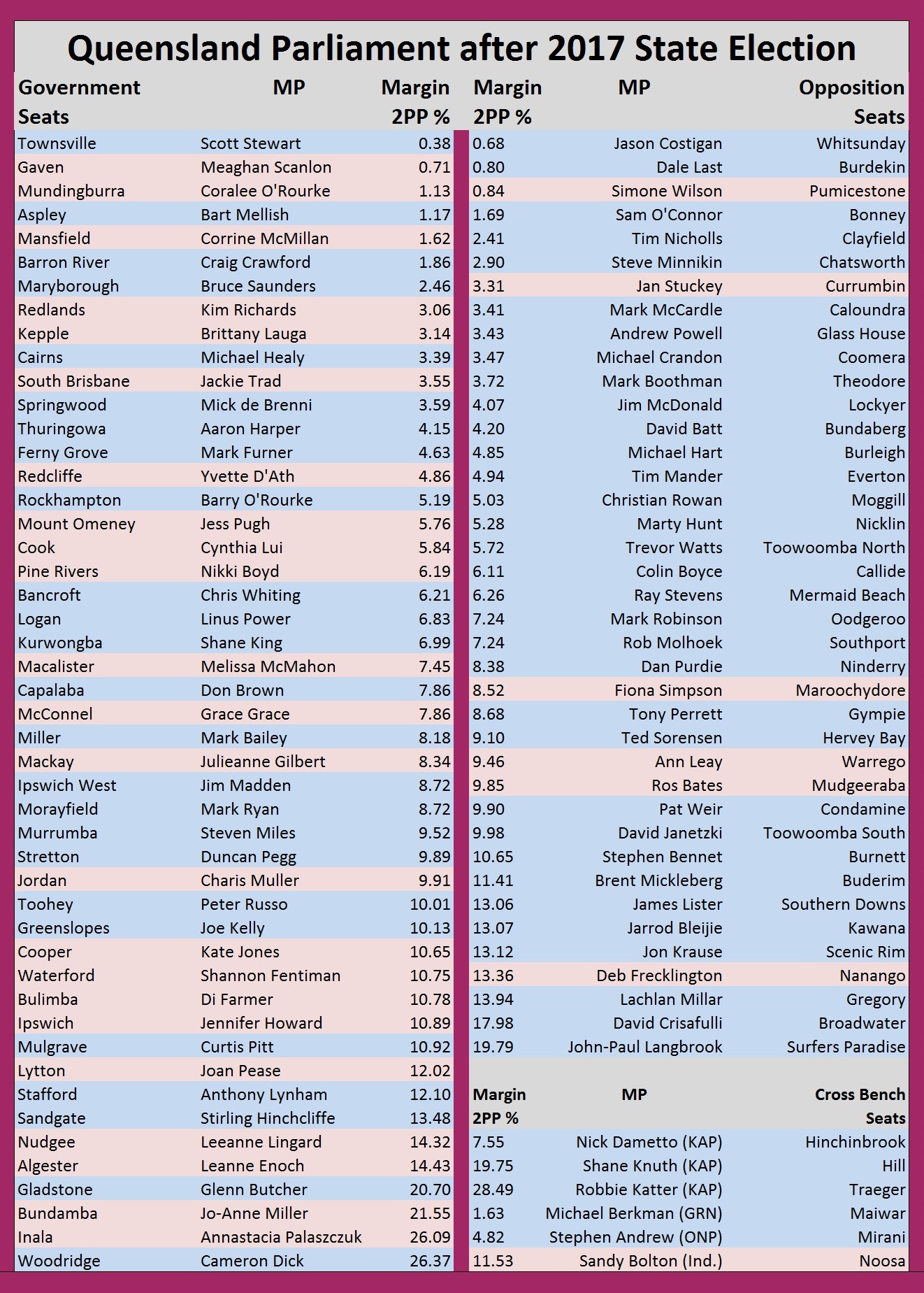

At the recent Queensland election the Labor Party nearly achieved its 50% female representation target
Almost half of the seats won by Labor in the 2017 Queensland election went to female candidates. Of the 48 seats won by Labor, males won 25 seats (52.1%) and females won 23 seats (47.9%).
This is a significant increase in Labor’s female representation from the previous parliament elected in 2015. Of the 44 Labor MPs elected in 2015 only 17 were women (38.6%).
Labor’s affirmative action to increase female representation
Labor implemented affirmative action policies to increase the proportion of females in Parliament in the 1990s.
Earlier this year Labor MP and then Minister for Women Shannon Fentiman said:
Affirmative action rules implemented within the Labor Party in early 1990s mean that we now have a situation where our Premier has more than enough capable, talented women to choose from to fill her cabinet.
Quotas remove the gendered bias that prevents people from being appointed on merit, which is why we now have so many strong, capable women in leadership positions.
In July 2015 the Labor party set a target to have women make up 50 per cent of MPs by 2025.
If a few hundred people had voted differently in a couple of marginal seats, Labor would have reached its 50% female MPs target this year.
Since 2015 women have been well represented in Labor governments under Premier Annastacia Palaszczuk.
Her initial 14 person cabinet in 2015 had a eight women and six men. Following cabinet reshuffles and increases in the size of her ministry the gender balance prior to the 2017 election was eight women and nine men.
Following her 2017 re-election, Premier Palaszczuk announced today:
Cabinet will have equal representation of men and women, and four of the five Assistant Ministers are women.
LNP female representation
The gender balance for the Liberal national Party (LNP) deteriorated at the 2017 State election.
In the previous Queensland Parliament the LNP had eight women among its 42 MPs giving females 19% of the Party’s seats.
Now the LNP has 39 MPs in State Parliament but only six of them are female (15.4%).
Total female representation in the Queensland Parliament is now 32.3% which is very slightly less than the 32.9% average female representation in Federal, state and territory parliaments around Australia, according to the Federal Parliamentary Library.
Female candidates need winnable seats
A key step to getting more women in parliament is for them to be endorsed by major parties as candidates for winnable seats, ones which require a swing of less than 5%.
The chart below shows the new Queensland MPs ranked in order of their margin after distribution of preferences.
In conformity with traditional stereotyping, girls are pink and boys are blue.
Redlands2030 – 11 December 2017
Please note: Offensive or off-topic comments will be deleted. If offended by any published comment please email thereporter@redlands2030.net

2 Comments
That’s fantastic!
So pleased that QUANTITY means much more than QUALITTY!
Even the Police Services are going down the same road…………
50/50 is good, to hell with whether they can do the job or not anymore!
Good news on TV last evening announcing Deb Frecklington as new leader of LNP in Queensland along with Tim Mander as deputy. Recall Langbroek under Newman Administration selling learning facilities, including TAFE in Alexandra Hills to be transformed into housing. Thankfully, female Labor leader stopped it. Recently announced, universities are turning out an oversupply of lawyers, with trades people needed. So we now have two strong female leaders in the Queensland government looking after the interests of we, the people, beginning 2018. We live in interesting times.